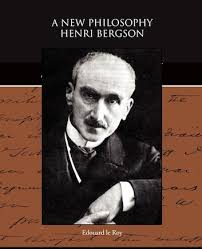Chapter I — Method
byChapter I begins by positioning philosophical intuition not in opposition to science, but as its extension—one that builds on scientific understanding to reach deeper truths. Rather than reject scientific inquiry, Henri Bergson insists that true philosophy depends on it while going beyond its limits. Science gives us clarity and structure, but it cannot fully express the flow of life. Where science categorizes and defines, philosophy—through intuition—touches the essence that lies beneath. This intuition doesn’t replace knowledge; it enriches it. By urging thought into greater tension and awareness, philosophy enables a leap into realities that analytical tools can only point toward but never capture completely.
The philosopher’s aim is not to produce images for emotional effect, as an artist might, but to use imagery to launch the mind beyond sensory representation. While both art and philosophy spring from intuition, their destinations differ. Art externalizes inner emotion into form, while philosophy reaches inward to provoke insight. Bergson envisions intuition as a bridge that connects direct experience to intellectual realization, expanding consciousness rather than just describing it. In doing so, philosophy becomes a transformative exercise, one that reshapes how reality is perceived. It calls not for passive admiration but for active participation in thinking. Thought becomes a path not only to understanding but to inhabiting truth.
This process leads to a radical redefinition of how reality should be approached—not as something static to be dissected, but as a dynamic force to be entered. For Bergson, the world is not a collection of objects, but a continuous stream of becoming. Concepts fall short because they freeze motion into fixed outlines. Intuition, however, allows the mind to move with life’s rhythm. In this sense, philosophy is no longer about reaching definitive answers but about learning to stay in tune with experience. It replaces the illusion of control with a deeper sense of engagement. To grasp reality through this method is to feel its pulse, not just measure its surface.
Bergson’s thought resides at the intersection of the poetic and the scientific. He uses metaphors not to simplify but to provoke, to awaken the intellect to a broader field of vision. His philosophy calls for a kind of cognitive flexibility—a willingness to move between disciplines and discard familiar categories. Scientific knowledge is not discarded; it is made fuller through intuition. Likewise, art’s sensory insight is drawn upon, not to escape truth, but to approach it from a different angle. Through this integration, Bergson challenges the boundaries between emotion and reason, between knowing and living. He suggests that consciousness itself cannot be reduced to formula; it must be felt, navigated, and lived from within.
Such a philosophy asks more than understanding—it demands transformation. Bergson proposes that we break free from intellectual habits that confine us to rigid thinking. Reality, in his view, cannot be accurately understood through detached observation alone. Instead, we must risk stepping into the stream, letting go of the desire to fix meaning in place. This is not a rejection of intellect but an expansion of its possibilities. When thought is grounded in intuition, it becomes flexible, alive, capable of following the fluid nature of consciousness itself. Through this shift, philosophy becomes not just an academic pursuit, but a practice of perceiving the world more deeply.
The result is a vision of philosophy that feels both ancient and new. It echoes older traditions of wisdom that prioritized lived experience, yet it speaks directly to modern concerns about fragmentation and disconnection. In a world increasingly governed by measurement and categorization, Bergson’s approach offers a counterpoint rooted in the richness of direct perception. He does not deny the usefulness of systems, but he warns against their tendency to replace life with abstraction. To think intuitively is to keep contact with reality, to allow knowledge to remain open, incomplete, and vibrant. This approach does not weaken truth—it preserves its depth.
In the end, Bergson presents a way of thinking that resists simplification and embraces complexity without fear. His philosophy invites us to live with our minds fully present, open to change and guided by an inner sense of motion. He doesn’t offer easy conclusions, but he does offer a deeper way to begin. To read Bergson is not to gather facts but to practice a form of perception that brings one closer to the living core of reality. It is a philosophy of becoming—alive, unfolding, and never fully finished. Through it, we are reminded that to understand life, we must live it with attention, with imagination, and with an intellect that moves as freely as the world it seeks to grasp.

